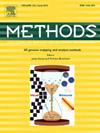开发和验证用于检测药物制剂中托那酯的稳定性指示高效液相色谱法。
IF 4.2
3区 生物学
Q1 BIOCHEMICAL RESEARCH METHODS
引用次数: 0
摘要
本研究开发了一种稳定性指示反相高效液相色谱法(RP-HPLC),用于检测托那酯并评估其在药物制剂中的稳定性。色谱分离采用 Kinetex® C18 色谱柱(2.6 µm,150 x 3 mm,100 Å),温度为 50 °C,进样量为 20 µL。乙腈水溶液(5 - 33.5%)的线性梯度为 1 分钟,然后在 26 分钟内逐渐升至 100%,流速为 0.5 mL/min。在 275 纳米和 210 纳米波长下分别检测托那伯沙特及其降解产物。采用优化后的方法评估了托那伯沙特在脂质药物制剂中 5 ± 3 °C、25 ± 2 °C/60 ± 5 % 相对湿度和 40 ± 2 °C/75 ± 5 % 相对湿度条件下 3 个月的稳定性。该方法按照 ICH 指南进行了验证,在 5 - 200 µg/mL 范围内线性关系良好(R2 = 0.99994),准确度(回收率 98.25 - 101.58 %)和精密度(RSD < 2.5 %)良好。检测和定量限分别为 0.8 µg/mL 和 5 µg/mL。强制降解研究表明,在 70 °C的碱性(90.33 ± 0.80 %)、酸性(70.60 ± 1.57 %)和氧化应激(33.95 ± 0.69 %)条件下会出现明显降解,但在热应激或光解应激条件下未观察到降解。两种制剂在储存过程中均未出现化学降解。因此,该方法灵敏、特异,适用于药物制剂中托那酯稳定性的检测。本文章由计算机程序翻译,如有差异,请以英文原文为准。
Development and validation of a stability-indicating HPLC method for assay of tonabersat in pharmaceutical formulations
A stability-indicating reversed-phase high-performance liquid chromatography (RP-HPLC) method was developed to assay tonabersat and assess its stability in pharmaceutical formulations. Chromatographic separation was achieved using a Kinetex® C18 column (2.6 µm, 150 x 3 mm, 100 Å) at 50 °C, with a 20 µL injection volume. A linear gradient of acetonitrile in water (5 – 33.5 %) was applied for 1 min, followed by a gradual increase to 100 % over 26 min at a flow rate of 0.5 mL/min. Tonabersat and its degradation products were detected at 275 nm and 210 nm, respectively. The optimized method was used to evaluate the stability of tonabersat in lipid-based pharmaceutical formulations at 5 ± 3 °C, 25 ± 2°C/60 ± 5 % RH, and 40 ± 2 °C/75 ± 5 % RH over 3 months. The method was validated as per ICH guidelines and demonstrated linearity in the range of 5 – 200 µg/mL (R2 = 0.99994) with good accuracy (98.25 – 101.58 % recovery) and precision (% RSD < 2.5 %). The limits of detection and quantitation were 0.8 µg/mL and 5 µg/mL, respectively. Forced degradation studies showed significant degradation on exposure to alkaline (90.33 ± 0.80 %), acidic (70.60 ± 1.57 %), and oxidative stress (33.95 ± 0.69 %) at 70 °C, but no degradation was observed on exposure to thermal or photolytic stress. No chemical degradation was observed in either formulation on storage. Thus, the method was sensitive, specific, and suitable for stability testing of tonabersat in pharmaceutical formulations.
求助全文
通过发布文献求助,成功后即可免费获取论文全文。
去求助
来源期刊

Methods
生物-生化研究方法
CiteScore
9.80
自引率
2.10%
发文量
222
审稿时长
11.3 weeks
期刊介绍:
Methods focuses on rapidly developing techniques in the experimental biological and medical sciences.
Each topical issue, organized by a guest editor who is an expert in the area covered, consists solely of invited quality articles by specialist authors, many of them reviews. Issues are devoted to specific technical approaches with emphasis on clear detailed descriptions of protocols that allow them to be reproduced easily. The background information provided enables researchers to understand the principles underlying the methods; other helpful sections include comparisons of alternative methods giving the advantages and disadvantages of particular methods, guidance on avoiding potential pitfalls, and suggestions for troubleshooting.
 求助内容:
求助内容: 应助结果提醒方式:
应助结果提醒方式:


